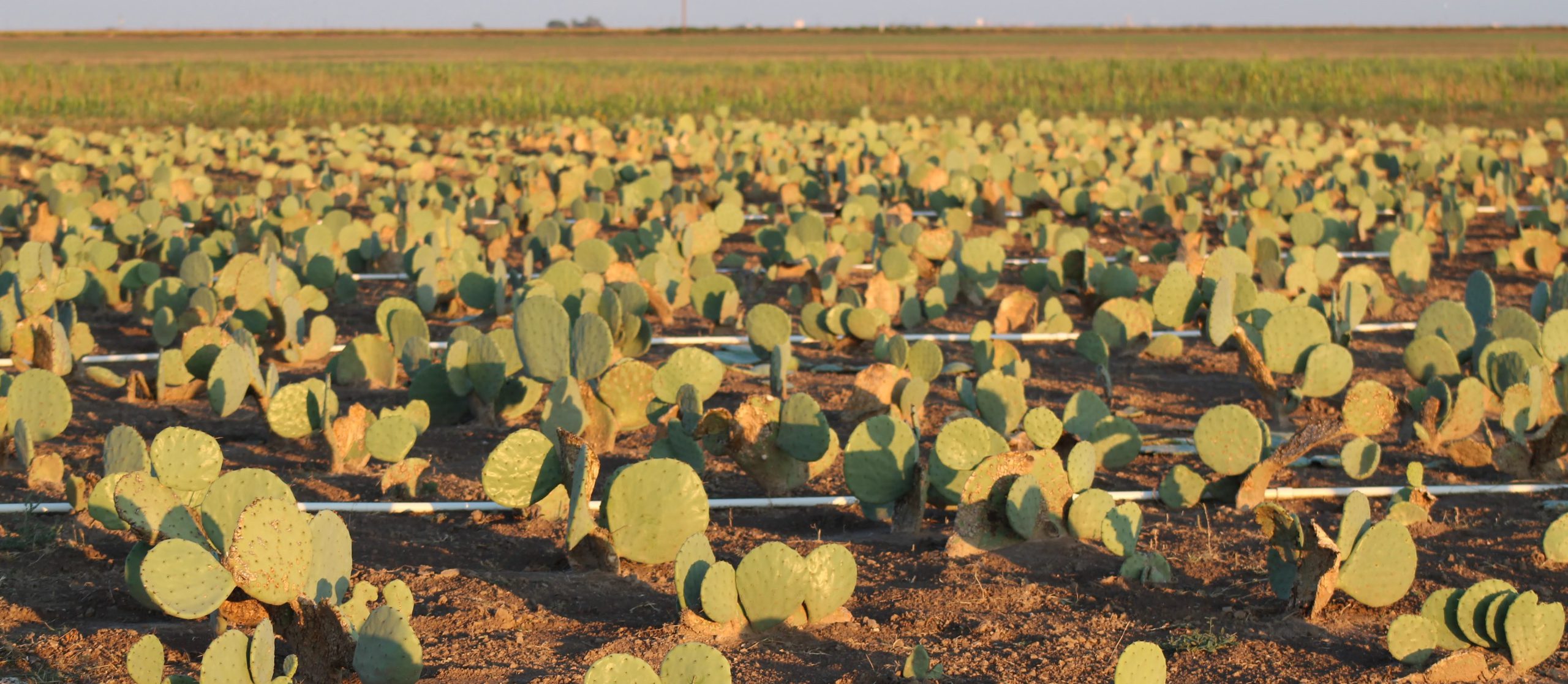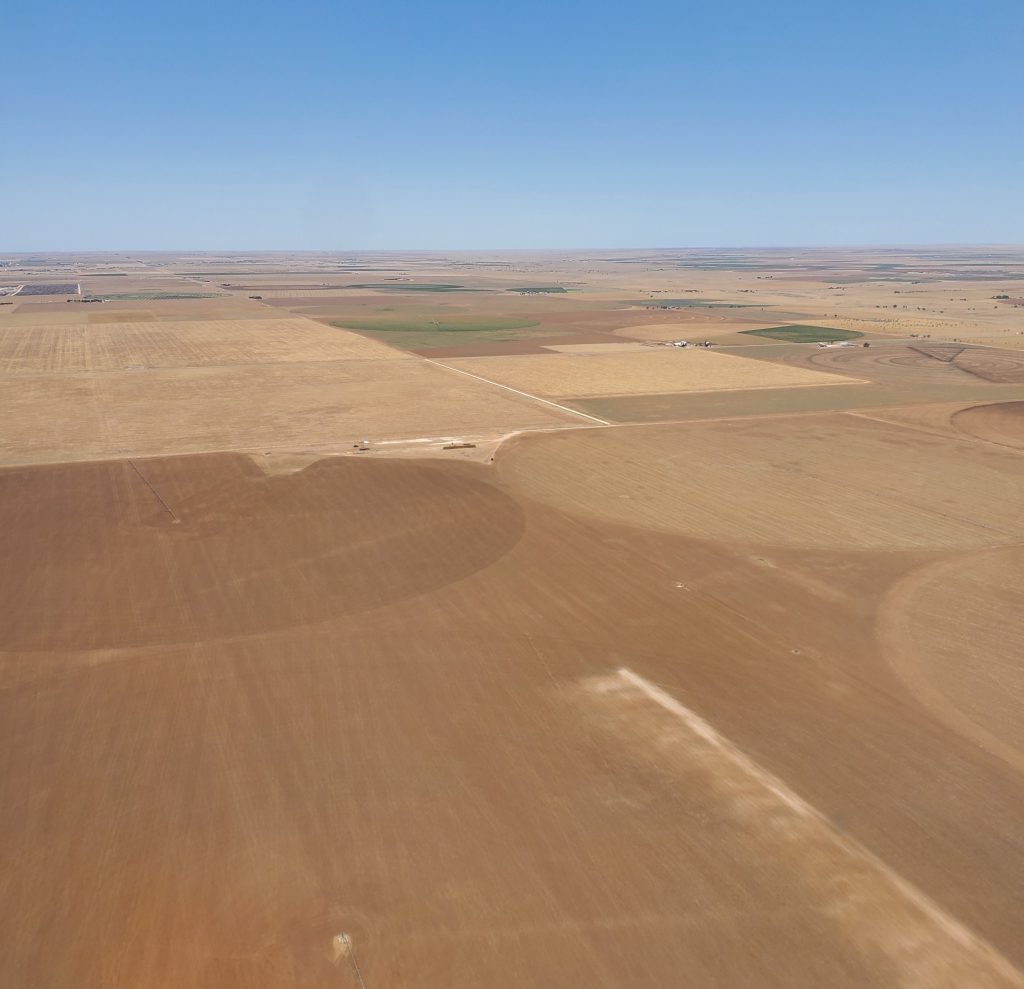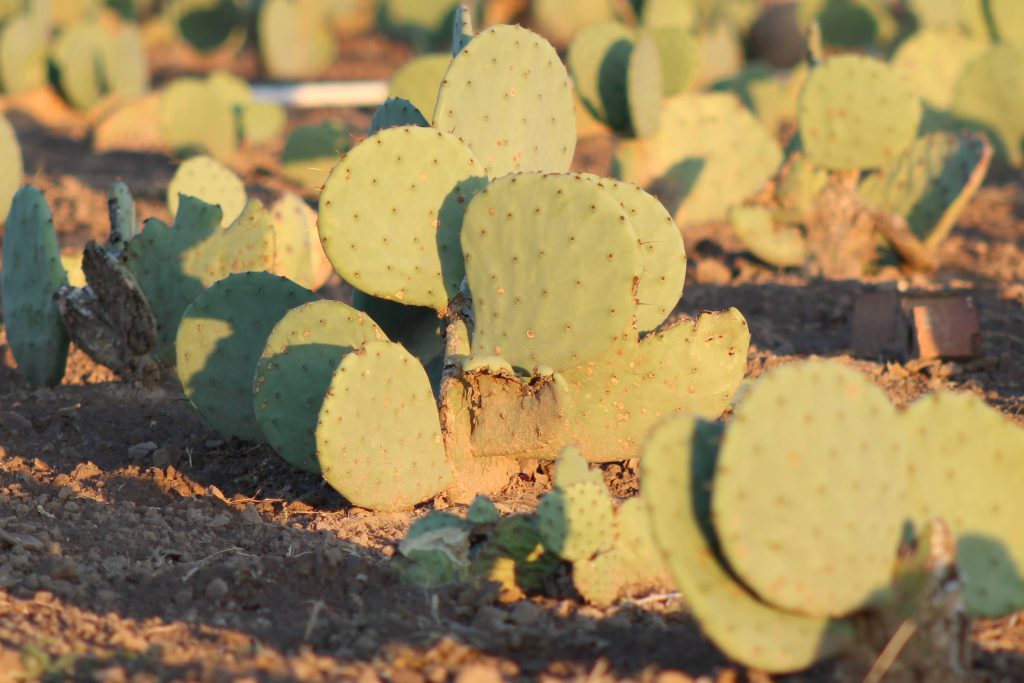
40% of the land in the United States is considered dryland. Unpredictable climate and increased drought has transformed once fertile farmlands to land undesirable for crops.
Information provided is a summary of the research performed by West Camp Nopal, LLC and where available references have been identified. West Camp Nopal, LLC does not make any assertions to the findings or results presented herein. We encourage you to independently research and consult with professionals on any of the information presented to form an opinion.
Growing up in the Texas Panhandle, I remember playing in fields of cotton, hiding in cornfields and enjoying the fresh scent of seasonal crops. Today, cotton fields are scarce, struggling to blossom, the corn stalks are shorter and other crops are rarely farmed. Changes such as this, affect the economy of communities that rely on farming income. This phenomenon has is felt deeply and a point of concern for the nation. Recently, I stumbled on an article by the Associated Press speaking to this very issue in the Lubbock Area. Drought takes toll on country’s largest cotton producer [27]

Fortunately, nopal is a highly sustainable plant that thrives in dryland and a great ecological addition that can help heal the environment.
Environment
Research supports
Carbon Sequestration
Unlike most plants that perform their “work” during the day, nopal is a nocturnal kind of worker. Plants breath in Carbon Dioxide (CO2) during the day and convert it to food for the plant, however, nopal conserves its’ energy during the day, and does this process at night. Oddly, the nopal thrives in higher levels of CO2, showing higher levels of productivity [28]. The more the better!
Not a scientist? No problem, here are the basics:
What is CO2?
CO2 is a gas that naturally occurs in the environment. When we exhale we emit CO2 into the atmosphere, however, CO2 is also emitted by fossil fuels used for energy like coal and gas.
How does CO2 affect the weather?
CO2 is a greenhouse gas that absorbs heat from the Earth and then rereleases it back to Earth. This heat release is what causes temperatures to rise, resulting in unpredictable weather.
How is CO2 removed from the atmosphere?
Plants and coral reefs are natures’ CO2 removers, through photosynthesis, plants breath in CO2 and convert it into food.
How is the cactus any different than other plants when it comes to removing CO2?
Most plants release CO2 back into the air once it dies, but cactus is a remarkable plant that converts CO2 into mineral calcium that stays in the ground. This form of CO2 conversion is something only corals and shellfish can do [29]. Research on this particular topic are limited but pose create interest.
Restore Land
Nopal thrives in less-than desirable land – dry, hot, rocky, sandy, windy, drought, no problem! Planting nopal in degraded land can restore it back to health. In fact, the use of cactus for land restoration has been a method that has successfully been applied in North Africa to reduce desertification [30].
- Nopal can provide a barrier from erosion caused by wind
- The shallow root system breaks the crust (hard layer of soil) allowing for new vegetation to grow
- Rain roots (grow within hours of rainfall to quickly absorb water from surface) die off and remain in the soil adding mass capable of retaining future moisture
Renewable Energy (Biogas)
Nopal can be used as biomass in addition to other materials like manure, to create biogas. Further, the remaining material can be used as soil conditioner or fertilizer [31].
These words sound to trendy! I don’t understand. Don’t worry, neither did I.
What is Renewable Energy?
Energy created from natural resources that are naturally restored or that can quickly be restored to a capacity greater than what is used. Examples of these are wind, sun, heat, water movements.
What is Biomass? Biogas?
Material from plants or animals that is used to create energy (Biogas).
So, how does cactus produce energy?
Simplified cactus is mixed with manure to produce a gas that generates energy. The use of cactus as biomass is perfect for this process because of the natural water content in the cactus. In order for decomposition in the biogas process to occur, water has to be present, and cactus provides plenty of it!
Earth Friendly Leather
Nopal is one of the newest alternative leathers in the market. Its popularity is quickly growing and can be found in major fashion and product brands. A simple search of “cactus leather” will lead you on a trail of discovery of products created using this new leather. Leather created from nopal is earth friendly, sustainable and animal friendly.
Leather is too expensive, I don’t even own it
Why does it matter?
Leather is such a commonly used product, that you are likely to have an interaction with it today and not even realize it. Leather is used for fashion, furniture, vehicles and even pet products.
How is leather bad for the environment? Doesn’t it come from animal hides?
Often leather it is not biodegradable (unable to decompose) because of the chemicals introduced into the leather. Further, the amount of water required to make leather is substantial from the water consumed by the animal to its processing. Cactus leather is biodegradable and does not require as much water to grow or to be converted into leather.
How is this alternative leather different from the other alternatives?
Compared to traditional leather, cactus leather does not require as much water during growth or production. Other alternative leathers add chemicals that can transform the once degradable material into something that is not biodegradable – similar to plastic.
Livestock Feed (Fodder)
Nopal can be used as fodder for livestock and has been successfully implemented in other countries. Nutrition in the nopal, low water consumption during drought/summer and low cost make nopal a great alternative for livestock feed [32]. With increased cost of feed, water shortages, veterinary and other products, it has become less profitable and in some cases a loss for ranchers to raise livestock; but the nopal can help alleviate that.
I don’t raise livestock
Why does it matter?
Even if you do not directly use or consume products made from livestock, it is likely you are indirectly affected by it. Livestock has many uses such as food, adhesives, clothing, medical even fertilizer. Rising cost of livestock is passed down to the consumer (you and me).
Are the thorns eaten by livestock?
It is best practice to burn off the thorns (chamuscando) so that it can be consumed and digested more easily. Costs associated with burning thorns, cactus supply and frequency should be considered when implementing cactus as fodder.
Can livestock live just off of eating cactus?
Not forever. Cactus is a great supplement during drought or summer seasons but livestock should receive a wide range of nutrients when available.
Ongoing Research
Although we may have all come in contact with the nopal, and may or may not have been aware of its’ benefits; new research is showcasing cactus in a whole new light. Studies are ongoing about other uses, that one day may prove to benefit us all. Below are new studies.

New Studies
Oil Spill Cleaner
Mucilage (the slimy stuff) in nopal is being researched as an oil dispersant (keeps oil from settling).
Remember the Deepwater Horizon oil spill? This was the largest marine oil spill in history. The devastation of the spill cost the livelihood of marine life and coastal cities that relied on the water resources. Various efforts and substances were used to help remove the oil from the ocean. Although we hope an oil spill never happens again, if it does, cactus may play a part in the clean up.
Biodegradable Plastic
Mucilage is also being studied for making biodegradable plastics.
Plastic pollution is anticipate to increase to 29 million metric tons by 2040. Currently, the US contributes 42 million metric tons a year, the highest of any country [33]. Our dependence on plastics is hard to overcome, so if an alternative method is developed to create biodegradable plastics, it could be a monumental benefit.
References
- NAISHADHAM SUMAN, GAY ERIC, “Drought takes toll on country’s largest cotton producer”. Associated Press. Apnews, 2022 Oct 07. Web. 2022 Oct 11. https://apnews.com/article/business-texas-droughts-agriculture-us-department-of-42112182a5fd6a1b5cf8e71aa5897326
- Drennan, P.M, and P.S Nobel. “Responses of Cam Species to Increasing Atmospheric Co2 Concentrations.” Plant, cell and environment, v. 23 ,.8 pp. 767-781. doi: 10.1046/j.1365-3040.2000.00588.x https://onlinelibrary.wiley.com/doi/full/10.1046/j.1365-3040.2000.00588.x
- Garvie LA. Decay of cacti and carbon cycling. Naturwissenschaften. 2006 Mar;93(3):114-8. doi: 10.1007/s00114-005-0069-7. Epub 2006 Feb 2. PMID: 16453105. https://rruff-2.geo.arizona.edu/uploads/AM88_1879.pdf
- Ali Nefzaoui, Mounir Louhaichi, Hichem Ben Salem. (30/1/2014). Cactus as a Tool to Mitigate Drought and to Combat Desertification. Journal of Arid Land Studies, 24 (1), pp. 121-124. https://repo.mel.cgiar.org/handle/20.500.11766/7319
- Varnero, M.T. 2001. Sistemas de reciclaje de residuos sólidos orgánicos: biodigestores. Rev. Chile Agric., 26(250): 132–135. https://www.scribd.com/document/352098985/Varnero-2001-Sistemas-de-Reciclaje-de-Residuos-Solidos-Organicos-Biodigestores
- Le Houerou, H. (0000). Cacti (Opuntia spp.) as a fodder crop for marginal lands in the Mediterranean Basin. Acta horticulturae, , 21-46. https://pubag.nal.usda.gov/catalog/316466
- Lai Olivia. “8 Shocking Plastic Pollution Statistics to Know About”. Earth.org, 2022 Feb 08. Web. 2022 Oct 14. https://earth.org/plastic-pollution-statistics/